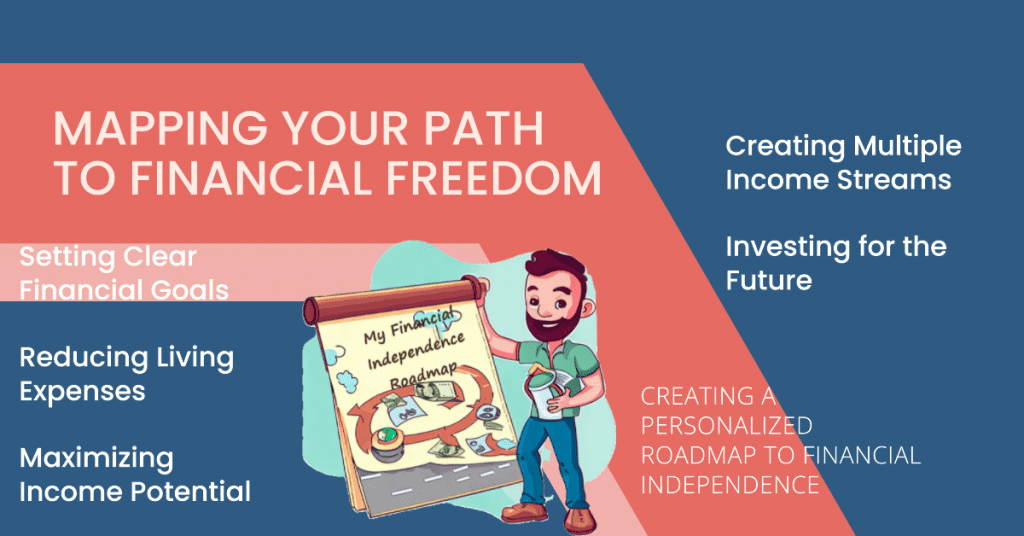Hello fellow remote work enthusiasts! I’m on a journey towards achieving financial independence while embracing the incredible lifestyle that remote work offers. While I haven’t quite reached my goal yet, I wanted to share my experiences, insights, and tips with you all. Let’s embark on this exciting adventure together!
Table of Contents
Remote Work: The Gateway to Financial Independence
Remote work has undeniably opened up a world of opportunities for those seeking financial independence. The flexibility it offers allows us to design our workdays in a way that aligns with our personal financial goals and aspirations. Gone are the days of the traditional 9-to-5 office grind; we now have the autonomy to craft our ideal work-life balance.
The Advantages of Remote Work for Financial Independence
| Advantages | My Thoughts |
|---|---|
| Flexible work hours | Tailoring my work schedule around my personal goals |
| Location independence | Reducing living expenses and exploring cost-effective areas |
| Increased productivity and efficiency | Maximizing my output to boost income potential |
| Diverse job opportunities | Exploring various roles that align with my skill set |
Crafting a Financial Independence Roadmap

Embarking on the journey towards financial independence involves careful planning and strategic decision-making. Here’s how I’m approaching it:
1. Setting Clear Financial Goals
Setting clear and achievable financial goals is the first step on the path to financial independence. Each goal should be specific, measurable, achievable, relevant, and time-bound (SMART).
Emergency Fund
An emergency fund is a safety net for unexpected expenses. To build mine, I’m following these steps:
- Assess Expenses: Calculate my monthly living expenses, including rent, utilities, groceries, insurance, and other essential costs.
- Calculate Target: Multiply my monthly expenses by the desired number of emergency fund months (typically 3-6 months).
- Regular Contributions: Allocate a portion of my income each month to gradually build up the fund.
Debt Repayment
Paying off debts efficiently is crucial to attain financial freedom. My approach involves:
- List All Debts: Compile a comprehensive list of all my debts, including amounts and interest rates.
- Debt Snowball or Avalanche: Choose a repayment strategy—debt snowball (starting with the smallest debt) or debt avalanche (starting with the highest interest rate debt).
- Allocate Extra Income: Whenever possible, dedicate additional income to accelerating debt repayment.
Retirement Savings

Saving for retirement ensures a comfortable future. Here’s how I’m preparing:
- Determine Retirement Needs: Estimate my retirement expenses and lifestyle to calculate the needed retirement savings.
- Maximize Contributions: Contribute the maximum allowed amount to my employer-sponsored retirement plan (e.g., 401(k)).
- Investment Allocation: Diversify investments within the retirement account to balance risk and returns.
Investment Portfolio
Building a diversified investment portfolio is vital for long-term financial growth. I’m doing it by:
- Risk Assessment: Evaluate my risk tolerance and time horizon to determine the right mix of investments.
- Research and Analysis: Conduct thorough research on different investment options like stocks, bonds, real estate, and more.
- Regular Review: Periodically review and adjust the portfolio to align with my financial goals and market conditions.
2. Budgeting and Expense Management
Effective budgeting and expense management are critical for financial stability. I’m following these steps:
- Track Spending: Record all expenses to understand where my money is going.
- Categorize Expenses: Group expenses into categories like housing, transportation, groceries, entertainment, etc.
- Budget Creation: Create a budget allocating funds to each expense category while ensuring savings and investments are accounted for.
By following these structured steps, I’m making steady progress towards my financial goals, inching closer to the day when I achieve financial independence.
Leveraging Remote Work to Accelerate Financial Independence
1. Reducing Living Expenses
Reducing living expenses is a key strategy to save more and accelerate the journey towards financial independence. Here’s how I’m doing it:
How to Reduce Living Expenses:
- Housing: Consider downsizing, moving to a lower-cost area, or negotiating rent to reduce housing costs.
- Transportation: Opt for public transport, carpool, or consider biking or walking to save on fuel and maintenance.
- Food and Groceries: Plan meals, buy in bulk, and limit dining out to save on food expenses.
- Utilities: Be mindful of energy and water usage to reduce utility bills.
- Subscription Services: Evaluate and cancel unused or unnecessary subscriptions.
2. Maximizing Income Potential
Maximizing income potential is crucial to speed up the journey towards financial independence. Here are some strategies I’m employing:
Income Boosting Strategies:
| Strategy | My Experience |
|---|---|
| Freelancing and passive income | Pursuing various streams of income alongside my job |
| Skill development | Constantly upskilling to qualify for higher-paying remote positions and freelancing opportunities |
| Negotiating contracts | Negotiating higher rates based on my skills, experience, and the value I bring to the table |
Examples of Passive Income Streams:
| Passive Income Streams | My Approach |
|---|---|
| Creating and selling an e-book or guide on a topic I’m knowledgeable about | Researching popular topics and creating valuable content |
| Investing in dividend-paying stocks or index funds | Conducting thorough research and diversifying my investments |
| Developing and selling mobile apps or software products | Utilizing my programming skills to create valuable applications |
Crafting a Financial Independence Roadmap (Continued)
3. Creating Multiple Income Streams
Diversifying your sources of income is a fundamental aspect of achieving financial independence. By generating revenue from various channels, you not only increase your overall earnings but also create a safety net for potential fluctuations in any one stream of income. Here’s a deeper dive into how I’m working on creating multiple income streams:
How to Create Multiple Income Streams:
- Identify Skill Sets and Passions:
Start by listing down your skills, hobbies, and passions. What are you good at? What do you enjoy doing? These can range from graphic design and writing to coding, teaching, or even crafting. Identifying your strengths and interests will guide you in selecting viable income-generating opportunities. - Explore Freelancing Opportunities:
Freelancing is a great way to utilize your skills to earn additional income. Websites like Upwork, Freelancer, and Fiverr provide platforms to offer your services in various domains. You can take up projects in your field of expertise, whether it’s web development, content creation, or digital marketing. - Consider Remote Part-Time or Contract Work:
Many companies offer remote part-time or contract positions that allow you to work on specific projects or assignments. Platforms like FlexJobs and Remote.co list such opportunities. Look for roles that align with your skills and fit well with your schedule. - Invest in Stocks, ETFs, or Mutual Funds:
Investing in the stock market can provide dividend income and potential capital gains. Research and invest in companies or funds that align with your investment goals and risk tolerance. Index funds and ETFs (Exchange Traded Funds) offer diversified exposure to different sectors of the market. - Explore Real Estate Investment:
Real estate can be a lucrative source of passive income. If you have the means, consider investing in rental properties. Rental income can provide a steady monthly cash flow. Real estate crowdfunding platforms like Fundrise also offer opportunities to invest in real estate with lower capital requirements. - Monetize a Blog or YouTube Channel:
If you have a blog or a YouTube channel with a decent following, explore monetization options such as affiliate marketing, sponsored content, and ad revenue. Over time, this can turn into a significant source of passive income. - Participate in Online Surveys and Focus Groups:
While not a significant source of income, participating in online surveys and focus groups (e.g., Survey Junkie, Swagbucks) can provide a little extra cash or gift cards for minimal effort.
4. Investing for the Future
Investing wisely is a cornerstone of financial independence. Here’s how I’m approaching it:

How to Start Investing:
- Educate Yourself: Learn about different investment options, risk management, and market trends. Books, online courses, and financial advisors can be valuable resources.
- Determine Risk Tolerance: Assess your risk tolerance to align investments with your comfort level. Some investments carry higher risks but offer greater returns.
- Start Small and Diversify: Begin with a small amount and diversify your investments across various asset classes to spread risk.
- Regular Monitoring and Adjustments: Monitor your investments regularly and make adjustments based on changes in your financial situation and market conditions.
5. Achieving Passive Income
Generating passive income is a key aspect of financial independence. Here’s my approach to it:
Building Passive Income Streams:
- Real Estate Crowdfunding: Invest in real estate through crowdfunding platforms like Fundrise to earn passive rental income and potential appreciation.
- Dividend Stocks and ETFs: Invest in dividend-paying stocks and ETFs to receive regular dividends, providing a steady income stream.
- Automated Online Businesses: Build and automate online businesses like dropshipping, print-on-demand, or affiliate marketing for ongoing passive income.
- Royalties from Creative Work: Create and sell music, art, or literature to earn royalties whenever your work is used or sold.
- Peer-to-Peer Lending: Lend money through peer-to-peer lending platforms and earn interest on your loans.
6. Continuously Learning and Adapting
The landscape of remote work and personal finance is ever-evolving. Staying informed and continuously learning is vital. Here’s what I’m doing:
How to Stay Informed and Adapt:
- Read Books and Blogs: Regularly read books, blogs, and articles related to personal finance, investing, and remote work to stay updated on industry trends and best practices.
- Attend Webinars and Workshops: Participate in webinars and workshops conducted by experts in the field to gain new knowledge and insights.
- Network with Like-minded Individuals: Join online communities, forums, or social media groups related to remote work and financial independence to connect with others and share experiences.
Overcoming Challenges: My Journey So Far
Here are some challenges I’ve faced and how I’ve managed to overcome them:
| Challenges | How I Overcame Them |
|---|---|
| Inconsistent income | Creating multiple income streams and managing expenses |
| Uncertain market conditions | Diversifying investments and staying informed |
| Balancing work and personal life | Setting clear boundaries and managing time effectively |
Budgeting and Expense Management Worksheet
Use this worksheet to track your monthly income and expenses to create a detailed budget and manage your finances effectively.
Monthly Income
| Source | Amount ($) |
|---|---|
| Primary Job/Salary | |
| Freelance Work | |
| Rental Income | |
| Side Hustles | |
| Other Income Sources | |
| Total Income | $0.00 |
Monthly Expenses
| Expense Category | Budgeted Amount ($) | Actual Amount ($) |
|---|---|---|
| Housing (Rent/Mortgage) | ||
| Utilities (Electricity, Water, Gas) | ||
| Groceries | ||
| Transportation | ||
| Insurance (Health, Car, etc.) | ||
| Debt Payments | ||
| Entertainment | ||
| Dining Out | ||
| Health & Wellness | ||
| Savings/Investments | ||
| Other (Specify) | ||
| Total Expenses | $0.00 | $0.00 |
Budget Summary
| Category | Budgeted Amount ($) | Actual Amount ($) |
|---|---|---|
| Total Income | $0.00 | $0.00 |
| Total Expenses | $0.00 | $0.00 |
| Net Income (Income – Expenses) | $0.00 | $0.00 |
Budgeting Tips:
- Track Daily Spending: Keep a daily record of all your expenses, no matter how small.
- Review and Adjust: Regularly review your spending and adjust your budget as needed to stay on track.
- Emergency Fund: Allocate a portion of your income to build and maintain an emergency fund.
- Debt Repayment: Dedicate a specific amount of your income to pay off debts and loans.
- Savings and Investments: Prioritize saving and investing by allocating a percentage of your income.
Remember, effective budgeting helps you take control of your financial future and move closer to achieving financial independence. Stay disciplined and consistent in managing your finances.
Conclusion: The Remote Work-Financial Independence Nexus
As a remote work enthusiast pursuing financial independence, diversifying income streams—especially through passive means—is a critical strategy, especially when dealing with inconsistent income. With the right mindset, strategic planning, and a determination to succeed, we can make our dreams of financial freedom a reality. Let’s continue this journey, supporting and learning from one another. Here’s to a future where we’re not only working remotely but living life on our terms!
Happy remote working and financial independence chasing!

